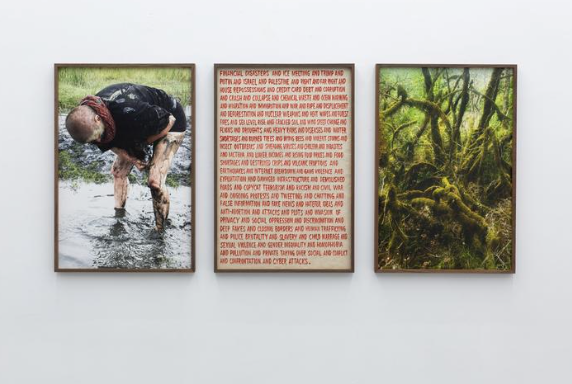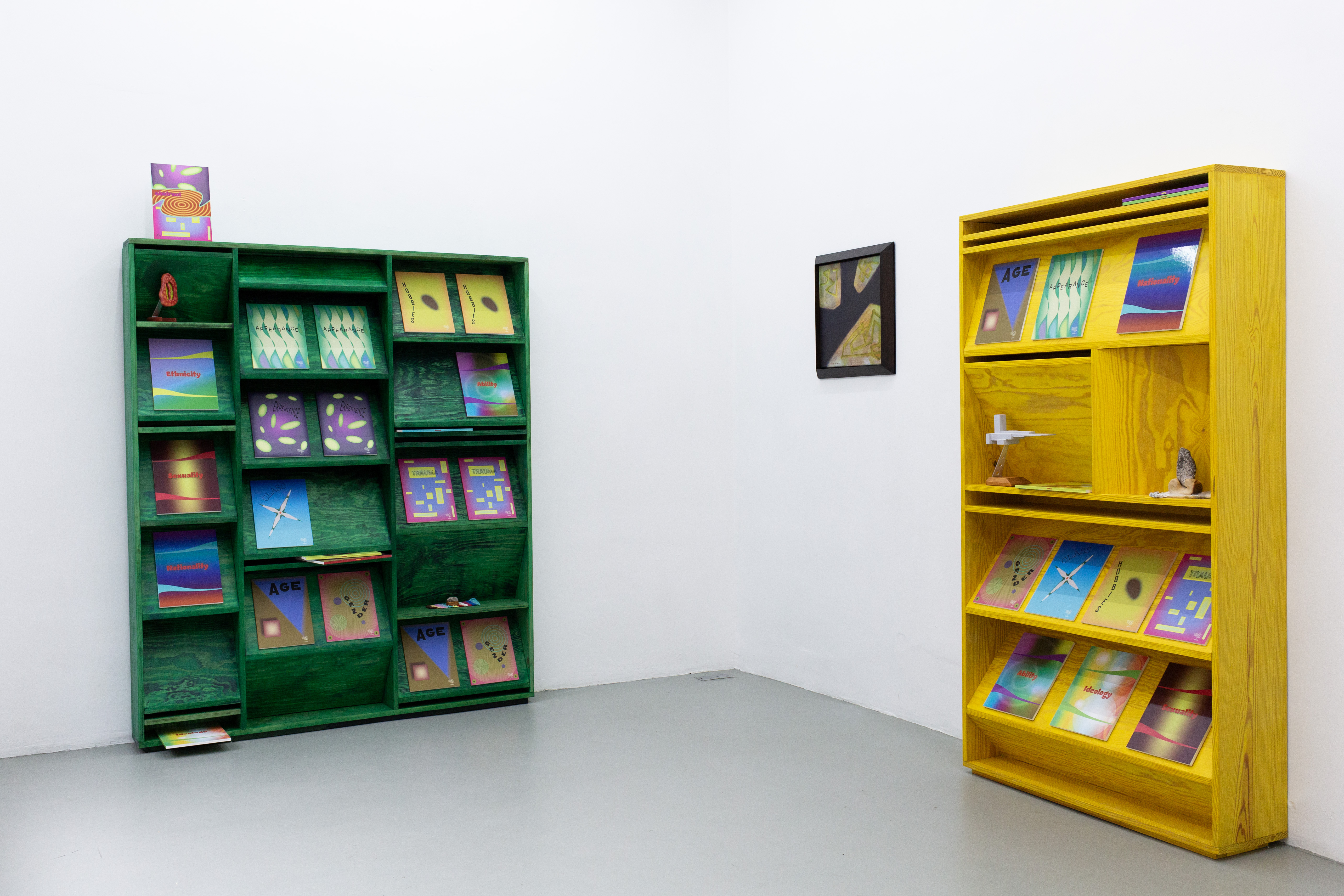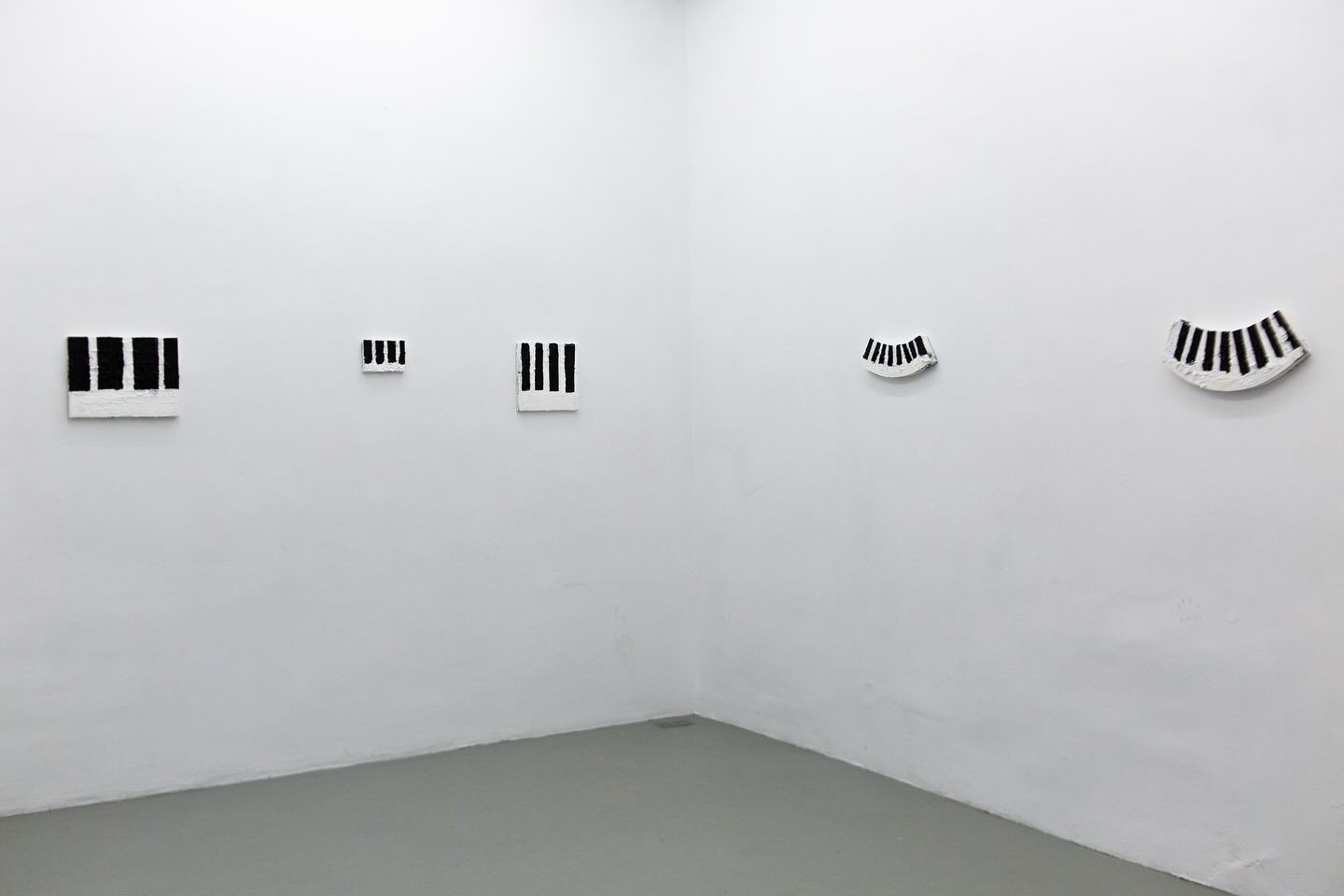Texts by
Michael Curran
written on the occassion of
As I Walk I Resist (Bang the drum and Fuck the gun) (2025)
an exhibition by Ria Pacquée
Michael Curran
written on the occassion of
As I Walk I Resist (Bang the drum and Fuck the gun) (2025)
an exhibition by Ria Pacquée
Ria Pacquée’s artistic process begins on the street. As a teenager she stood on an Antwerp street corner and waited to see what might happen. Consequently over several decades she has walked through the thoroughfares and side streets of this city and many others across the world. Whether in Vienna, Kathmandu, Mexico City or Varanasi, she engages in her surroundings, acutely attentive to the fluctuation of events, the speed and slowness of things, finding the magical in the seemingly mundane. Whether as a performer or an active eye behind the camera, the theatre of everyday life is her medium. Ria’s practice is wholly informed by the activity of walking. The rhythms of walking, talking and looking bring forth a riffing with words, actions, sounds and images. The rhythm of her walking generates a pulse that exists throughout her work, like a heartbeat, a drumbeat, an earthbeat.
At Pizza Gallery she exhibits four props from previous performances: there is a walking stick from The Document For The Right To The Everyday 1999, then a megaphone from Pointing and Shouting 2011, a stone from My Hand Holds A Stone, A Stone As A Weapon 2012, and lastly a crash helmet from Dharma and Karma 2024.
These objects are placed on coloured plastic stools, the kind often used for casual congregations in backyards and porches or for informal and impromptu gatherings on the street. Stacked one upon the other these stools have become pedestals, gathered together with chains that hold bells. They appear at once as objects of utility and ceremony ~ a blend of the practical and symbolic. The objects they support - helmet stick stone megaphone - possess a dormant power. They sit in readiness, awaiting further use and there is a strong sense of animism residing in the work. These objects have spirits and lives of their own. The assemblage sits in potentiality for further acts of ritual and revolt.
By the staircase is the image of the artist sitting on a bollard on the street, adopting the pose of the much copied Roman bronze, The Spinario (boy with a thorn in his foot). Ria references the young shepherd’s moment of focused attention and inward looking, the deep concentration required to remove the offending thorn, the obstacle to action, to walking further, and for a moment she has become the statue.
Displayed are a series of small curtains hanging from walking sticks. These are inspired by the thresholds, open doorways and windows, Ria has encountered on her many journeys. While alluding to the boundary between public and private space the curtains also speak of a softer more permeable boundary in which the cloth suggests a welcoming, protective portal to conviviality and communing in which the non-Western ideas of inside and outside do not apply. The curtain is an ambiguous intermediary.
A short video Holy Fire shows excerpts from various Hindu rituals involving fire, filmed by the artist on a recent visit to Kathmandu. The screen is slightly obscured by a tangled dry branch, a stray piece of kindling to start another fire. The rituals for the dead extend into the space.
The scenes on ceramic tiles suggest film strips - a sequence of events, a procession, a moment of carnival or funeral or rite. The origins are not always clear but there is a sense of ceremony and transformation in these images. Shapeshifting is always present in Ria’s work, one thing stands in for another, a stone may become a weapon or even speak. The use of tiles here suggests the mosaicked nature of reality in which these images are fragments in time.
Headless drummer boys, cheap ornaments made from china, their heads snapped off and replaced by rocks and shells, suggest a mineral consciousness of truly terrestrial beings, totemic and revolutionary, banging their drums in an earthbeat.
“As I walk I resist ... Bang the drum and Fuck the gun.”
Ria employs elements of ritual and revolt throughout her work to awake us to the urgency of our times and the competing crises in 21st century life. Both ritual and protest are interruptions in time, movements that breakaway from the ordinary. They puncture the everyday. Rituals use symbols, gestures and spells while uprisings and protests use slogans, masks and gestures. In all the body is used as a vehicle for meaning. The texts and works here acknowledge the volatile and dangerous moment we occupy.
In her edition of words ending in “lessness” for example - wordlessness, the artist draws our attention to lacks, absences and a crisis of belief, a world in which we cannot envisage a future - a futurelessness. We are cautioned that apathy and despair and giving up are not options we can afford. There is a world asking for our attention right now.
At Pizza Gallery she exhibits four props from previous performances: there is a walking stick from The Document For The Right To The Everyday 1999, then a megaphone from Pointing and Shouting 2011, a stone from My Hand Holds A Stone, A Stone As A Weapon 2012, and lastly a crash helmet from Dharma and Karma 2024.
These objects are placed on coloured plastic stools, the kind often used for casual congregations in backyards and porches or for informal and impromptu gatherings on the street. Stacked one upon the other these stools have become pedestals, gathered together with chains that hold bells. They appear at once as objects of utility and ceremony ~ a blend of the practical and symbolic. The objects they support - helmet stick stone megaphone - possess a dormant power. They sit in readiness, awaiting further use and there is a strong sense of animism residing in the work. These objects have spirits and lives of their own. The assemblage sits in potentiality for further acts of ritual and revolt.
By the staircase is the image of the artist sitting on a bollard on the street, adopting the pose of the much copied Roman bronze, The Spinario (boy with a thorn in his foot). Ria references the young shepherd’s moment of focused attention and inward looking, the deep concentration required to remove the offending thorn, the obstacle to action, to walking further, and for a moment she has become the statue.
Displayed are a series of small curtains hanging from walking sticks. These are inspired by the thresholds, open doorways and windows, Ria has encountered on her many journeys. While alluding to the boundary between public and private space the curtains also speak of a softer more permeable boundary in which the cloth suggests a welcoming, protective portal to conviviality and communing in which the non-Western ideas of inside and outside do not apply. The curtain is an ambiguous intermediary.
A short video Holy Fire shows excerpts from various Hindu rituals involving fire, filmed by the artist on a recent visit to Kathmandu. The screen is slightly obscured by a tangled dry branch, a stray piece of kindling to start another fire. The rituals for the dead extend into the space.
The scenes on ceramic tiles suggest film strips - a sequence of events, a procession, a moment of carnival or funeral or rite. The origins are not always clear but there is a sense of ceremony and transformation in these images. Shapeshifting is always present in Ria’s work, one thing stands in for another, a stone may become a weapon or even speak. The use of tiles here suggests the mosaicked nature of reality in which these images are fragments in time.
Headless drummer boys, cheap ornaments made from china, their heads snapped off and replaced by rocks and shells, suggest a mineral consciousness of truly terrestrial beings, totemic and revolutionary, banging their drums in an earthbeat.
“As I walk I resist ... Bang the drum and Fuck the gun.”
Ria employs elements of ritual and revolt throughout her work to awake us to the urgency of our times and the competing crises in 21st century life. Both ritual and protest are interruptions in time, movements that breakaway from the ordinary. They puncture the everyday. Rituals use symbols, gestures and spells while uprisings and protests use slogans, masks and gestures. In all the body is used as a vehicle for meaning. The texts and works here acknowledge the volatile and dangerous moment we occupy.
In her edition of words ending in “lessness” for example - wordlessness, the artist draws our attention to lacks, absences and a crisis of belief, a world in which we cannot envisage a future - a futurelessness. We are cautioned that apathy and despair and giving up are not options we can afford. There is a world asking for our attention right now.
Michael Curran, 2025
☞ Ria Pacquée

















































